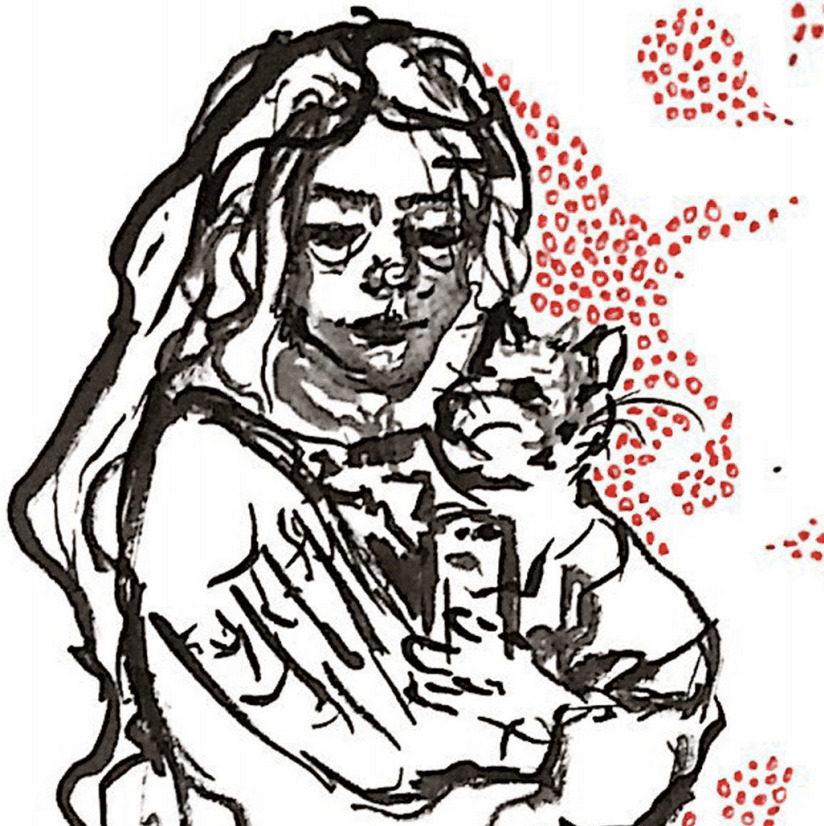I was lucky enough to be involved with Woroni in many different roles during my five years at ANU. It’s phenomenal that Woroni has existed for 70 years, and that I got to be part of years 65 to 69.
- Always collaborate
Nothing happens at Woroni because of one person. Every single thing, whether as big as the 64-page magazine or as small as an infographic in a news article, is produced by multiple people. Sure, articles may have a byline stating that the piece was only written by one person. But in reality, there was a content sub-editor who edited it, an art sub-editor who drew the matching artwork, a print team who proofread it, a content editor who laid it out in InDesign, and a social media sub-editor who put it online. Woroni is a giant machine of collaboration, just like most other things in life. I think there’s still a stereotype that the artistic genius is someone who stays inside in a dark cave obsessing over their masterpiece. Woroni taught me that it’s the opposite of that. Behind every masterpiece is a team of people polishing the edges to make it shine.
- Kill your darlings
A classic creative principle, but one that needs to be constantly learnt and relearnt. Sometimes you need to let go of your favourite ideas. Maybe it’s a sentence that doesn’t match the rest of your article, or a special video effect that you’ve been working on for three hours yet it still doesn’t look quite right. Ideas may not be as good in reality as they are in your head. It’s important to know when to keep going and when to kill them.
- Let go of perfect
This is an ongoing lesson for me, but it was a big one while I was TV Editor. Getting a four-minute video to perfection was basically impossible. I would come into the office everyday and work on the same video for a whole week, while in reality I was changing very little about it. Eventually, I started working by the 80/20 rule: if I was 80 per cent happy with a video, it would look completely fine to the average viewer. There’d be no need to keep trimming clips by the millisecond, or change the font positioning for the fifth time. At the end of the day, Woroni is a place to learn. There are always going to be mistakes made, and it’s rare that a piece of content is ever ‘perfect’. Better to share it with the world than keep it locked away on the editing computer where no one else is ever going to see it.
- Someone is always going to dislike what you do
This is the lesson I got out of being Editor-in-Chief. Woroni interacts with a really wide audience, from its own sub-editors to the readership of the ANU student body. Given that there are so many people with an interest in what Woroni does, it’s basically statistically impossible to make decisions that are viewed by all as good decisions. I learnt to trust my instincts, to trust my board and the values we had agreed on.
- Woroni is not intimidating
There was a six semester gap between when I was on the Woroni staff as a video sub-editor to when I returned as TV Editor. Joining Woroni after such a long time away felt really intimidating, even though I had still been tinkering away in the background as a contributor. I hadn’t been on the TV staff in so long; Woroni TV didn’t even exist back in 2015. But everyone was friendly and welcoming, and it didn’t take long for me to realise that I had made a brilliant decision in joining the board.
- Everyone is creative
I wrote a piece for Woroni in 2017 called The Quiet Art where I argued that art is in everyone’s lives, whether they realise it or not. The same is true of creativity. I don’t think all the students who have written for Woroni over the years consider themselves to be ‘writers’, yet they came up with an idea, worked on their piece with a sub-editor, and got to see their names in print. And then there are the students who happened to be in the right place at the right time when Woroni TV was making a video and gave their opinion on O Week or Game of Thrones. Everyone has some creativity inside of them, and Woroni can help them realise it.
- Woroni is in good hands
As proven by its 70-year history as a student media organisation, Woroni will always be run by different people every semester, and always be in a constant state of change. But there will always be people at Woroni who care strongly about its values and do their best to make sure it’s available to as many students as possible. Actually, I never really had this worry. While I was sentimental about leaving Woroni in November last year, I was never concerned about what was going to happen after I left. I knew I was leaving the organisation in good hands.
Julia Faragher was the Semester Two 2019 Editor-in-Chief of Woroni.
We acknowledge the Ngunnawal and Ngambri people, who are the Traditional Custodians of the land on which Woroni, Woroni Radio and Woroni TV are created, edited, published, printed and distributed. We pay our respects to Elders past and present. We acknowledge that the name Woroni was taken from the Wadi Wadi Nation without permission, and we are striving to do better for future reconciliation.
